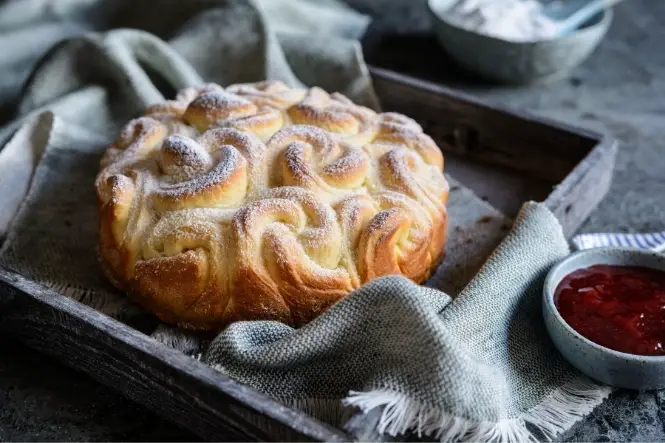There are two very different kinds of pull-apart cupcake cake:
With some ingenuity you can still make a cupcake cake that performs like a pull-apart cake, simply using utensils you already possess.
Make a Cupcake/Pull Apart Cake
- 125g cake margarine at room temperature
- 125g caster sugar
- 2 medium eggs
- 125g self-raising flour
- 1 tablespoon milk
Makes around 12 cupcakes.
Tools And Utensils

A cake board or solid display surface.
The first thing is to road test your chosen container. Set out the cupcake liners in the container and see if you can get them to sit flat in it. They will be distorted in shape at the sides, to fit into the form, but if the base of the container isn’t flat, the cake will not sit flat when it’s made and you can’t trim the top to get it even. You also need to have no big gaps between the cases, as that can make it really difficult to ice the cakes as one piece.
Once you’re sure your container works, tip the cases out while you make the cake mixture.
Preheat the oven to 190ºC/ 170º C (fan) or gas mark 5. The cakes need to be baked at or just below the middle shelf of the oven.
Cream margarine and sugar together in a large bowl until light and fluffy. Incorporating air at this stage allows the cakes to rise more evenly and soft cake margarine gives a more even consistency than butter.
Beat in eggs and flour until smooth and then, if the mixture seems a little dry, add the milk and stir to combine. The mixture needs to be quite firm, so that it doesn’t bubble up and create high peaks and low sides which can be difficult to ice.
Slightly dampen the base of your chosen container, and put the cases back in. The moisture will help the paper cases ‘stick’ to the bottom of the container until the mixture weighs them down. Divide the mixture between the cases, ensuring it is evenly shared out so all the cakes will have the same volume and bake until the cakes have risen and are firm to the touch in the centre. This takes between 15 and 18 minutes.
Remove the container from the oven and leave for ten minutes before inverting it over one cake rack, tipping the cakes out as a complete unit, and then putting the other rack on top and turning it over. You may find one or two cakes come astray, just push them back into the overall shape and leave it to cool.
Icing Your Cupcake Cake
Finishing your cake is the fun part!
- 75g vegetable shortening
- 75g butter or margarine at room temperature
- 500g icing sugar – sieved
- Gel food colouring in your chosen base colour.
In large bowl, or electric mixer, beat the two forms of fat together until they are smoothly combined. Gradually add the sifted icing sugar and when around half the weight has been mixed into the fats, add the gel icing to achieve the density of colour you desire. Gel colouring works better for this kind of cake than liquid colours as it doesn’t add moisture to the icing, and for a pull-apart cake, the icing needs to act as a bonding agent to hold the cakes together.
Scrape down the bottom and sides of the bowl and continue adding the sugar. The final mixture may seem dry, at which point you can either add more gel colouring, or a little milk. Don’t over-soften the icing though.
Keep the icing covered with cling film or a damp cloth until the cakes have cooled. If you’re not using the icing immediately, it can be stored for ten days in the refrigerator in an airtight container.

When you’re ready to ice the cake, layer your icing over the top with a palette knife, and then arrange your chosen decorations on top. You can either pipe further details onto the top of the cake or use a 3D décor to create a whimsical effect – as an example, this pond cake blends real and created elements: the large stones are real, the small stones are chocolate pebbles, the flowers are real and the frog (soft toy) and dragonfly (brooch) are crocheted items, which were then given to the recipient as a gift.


